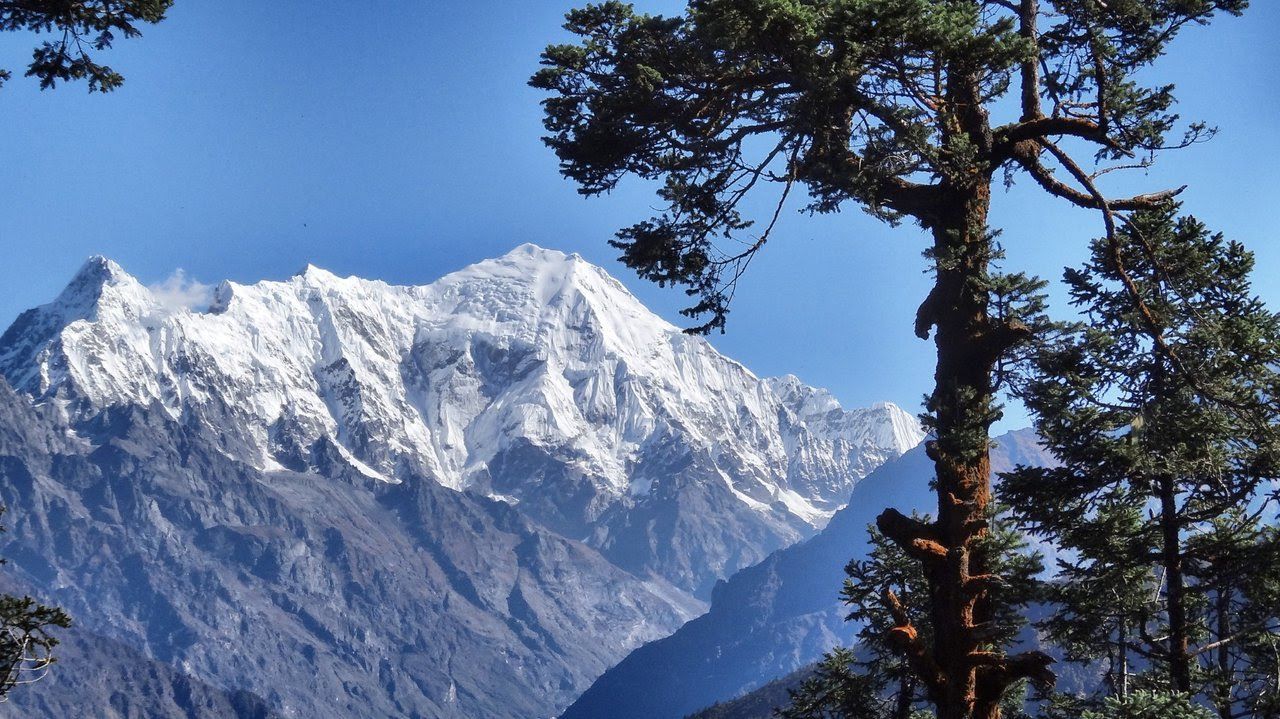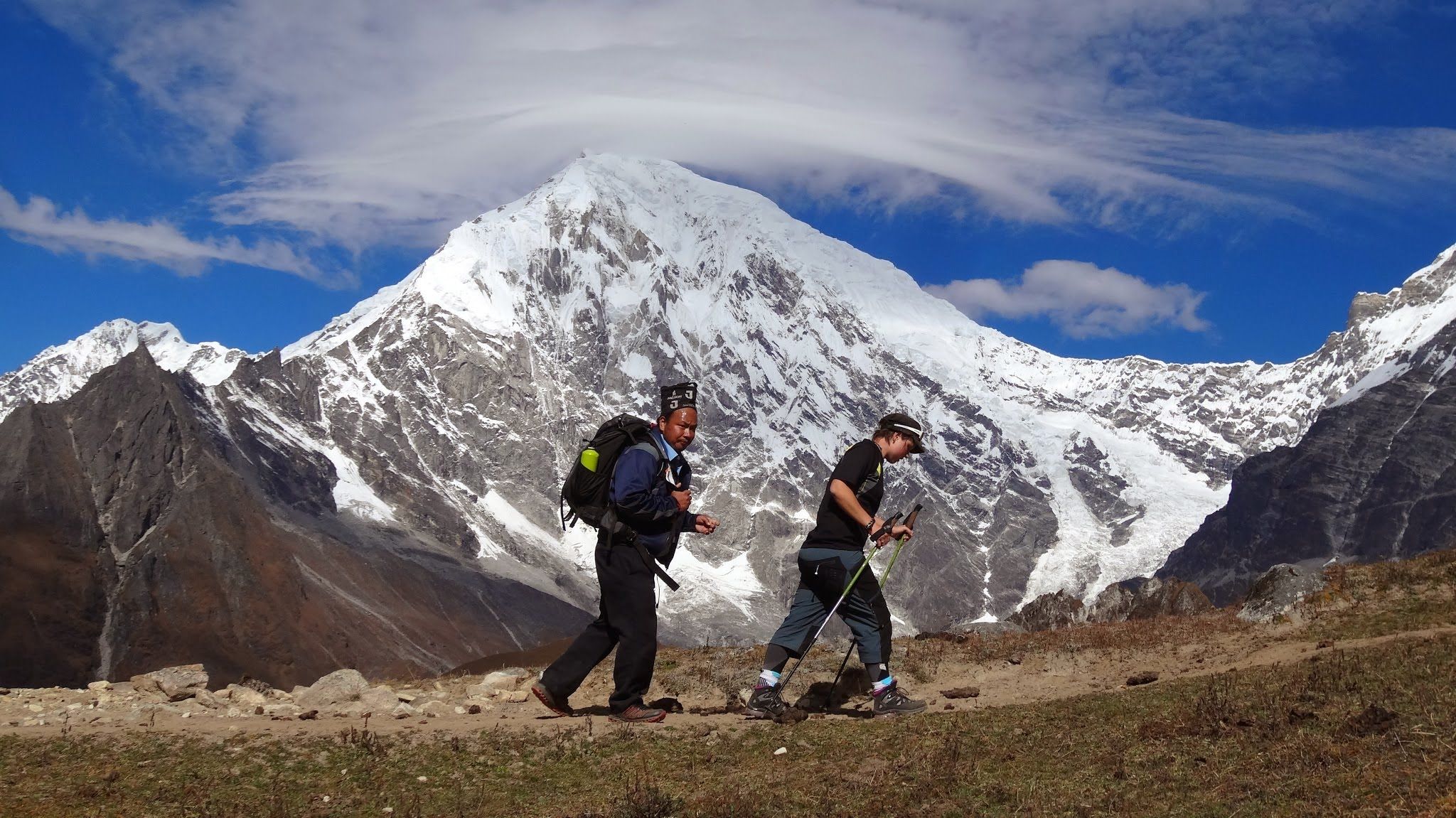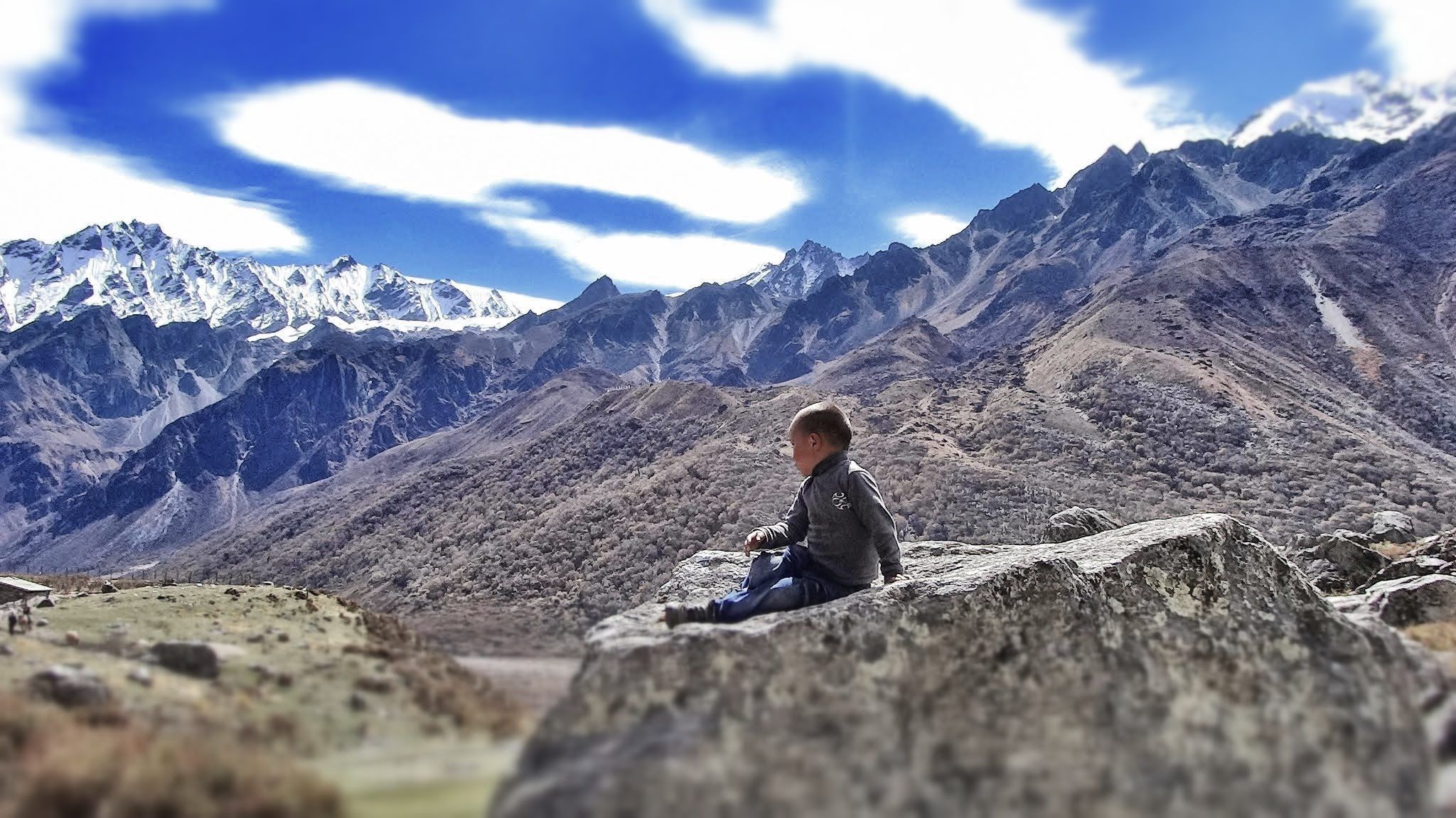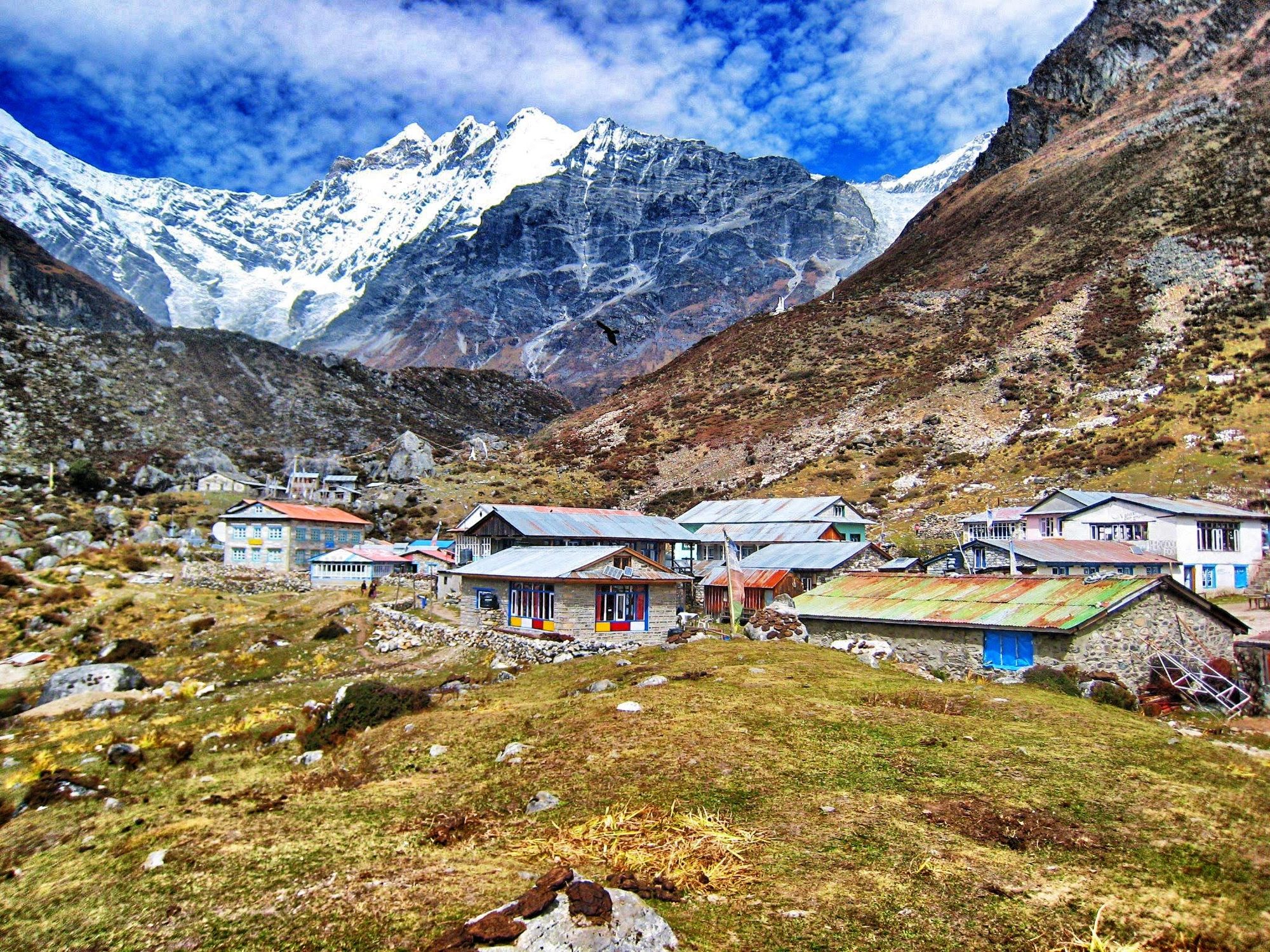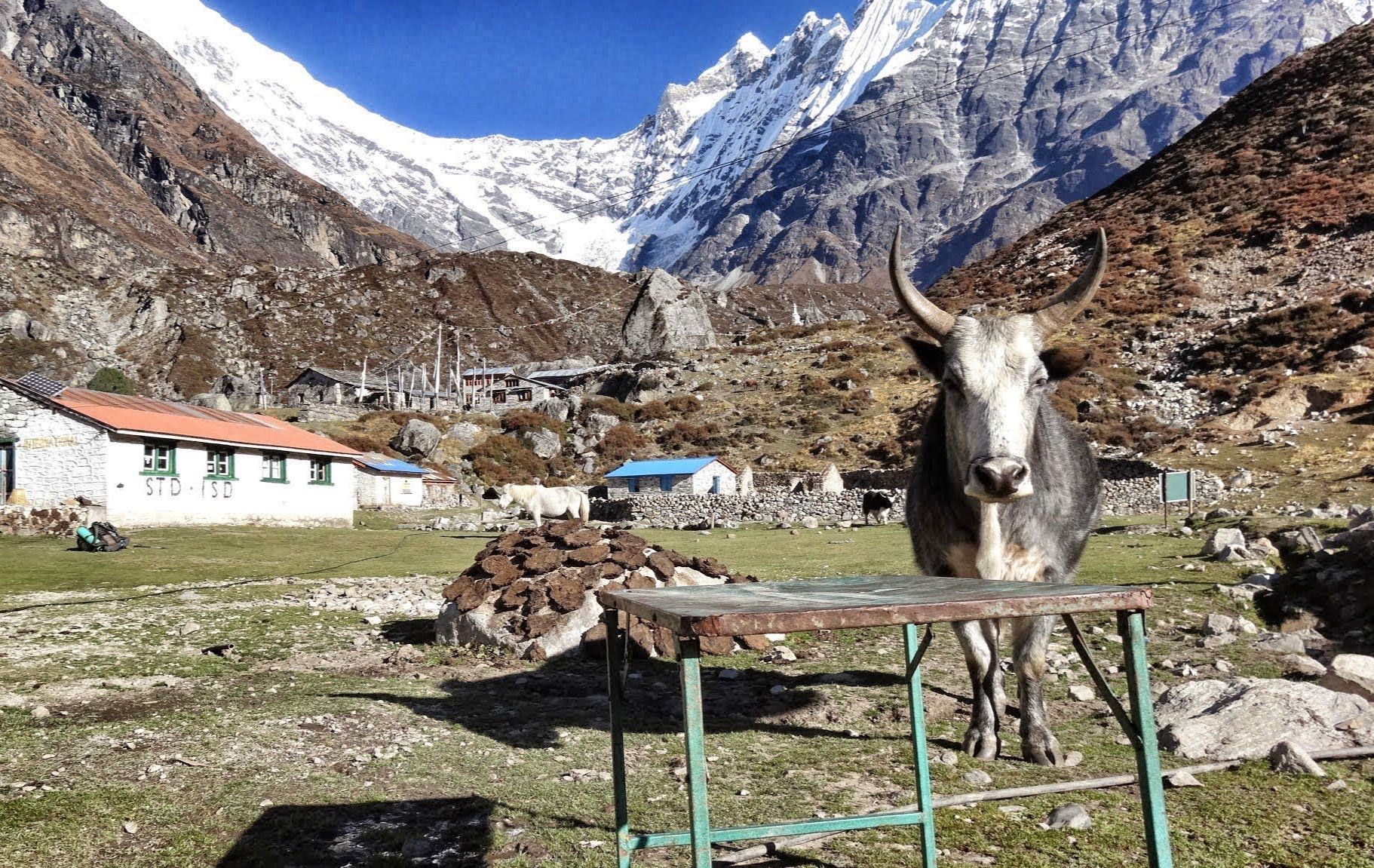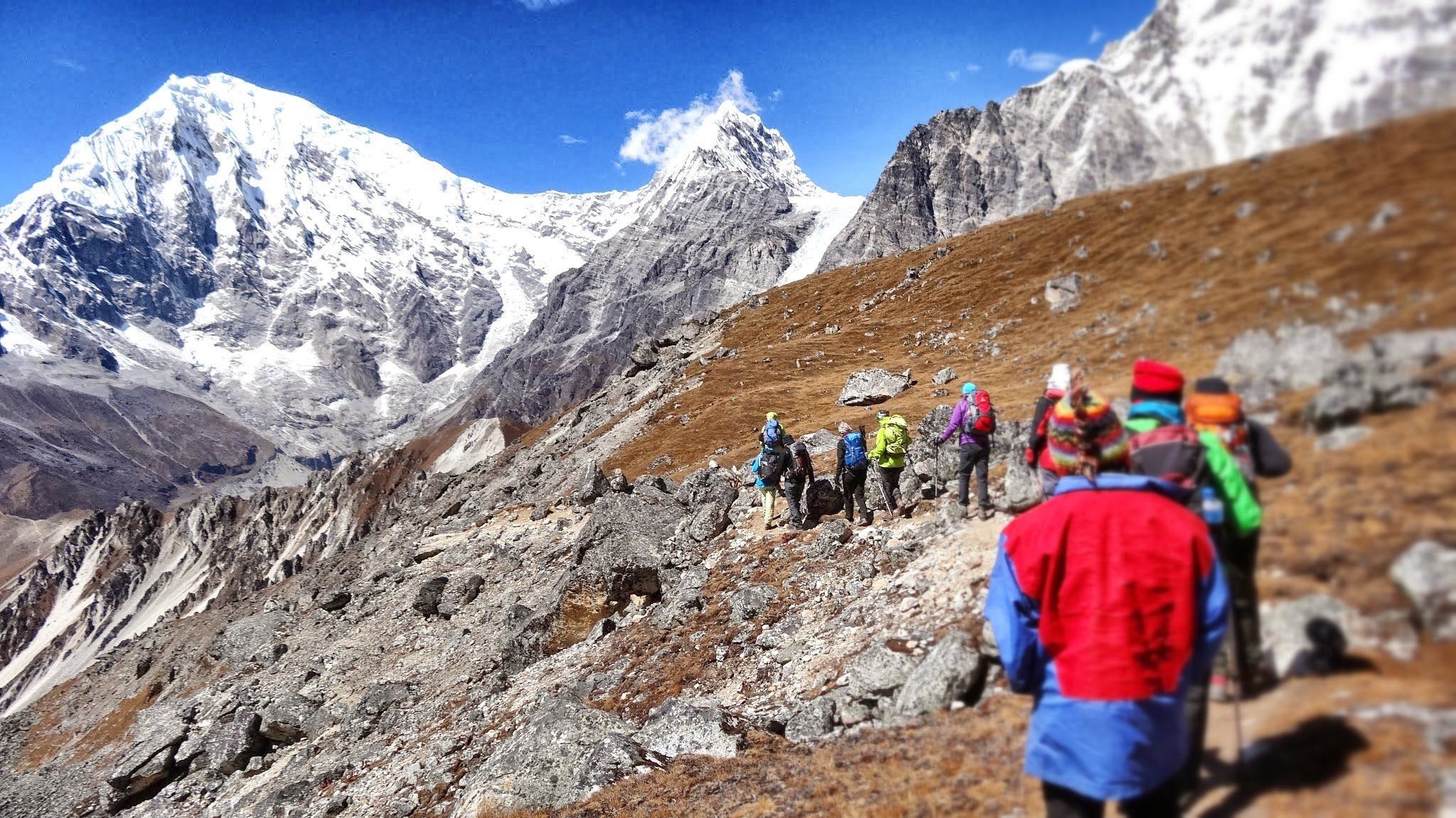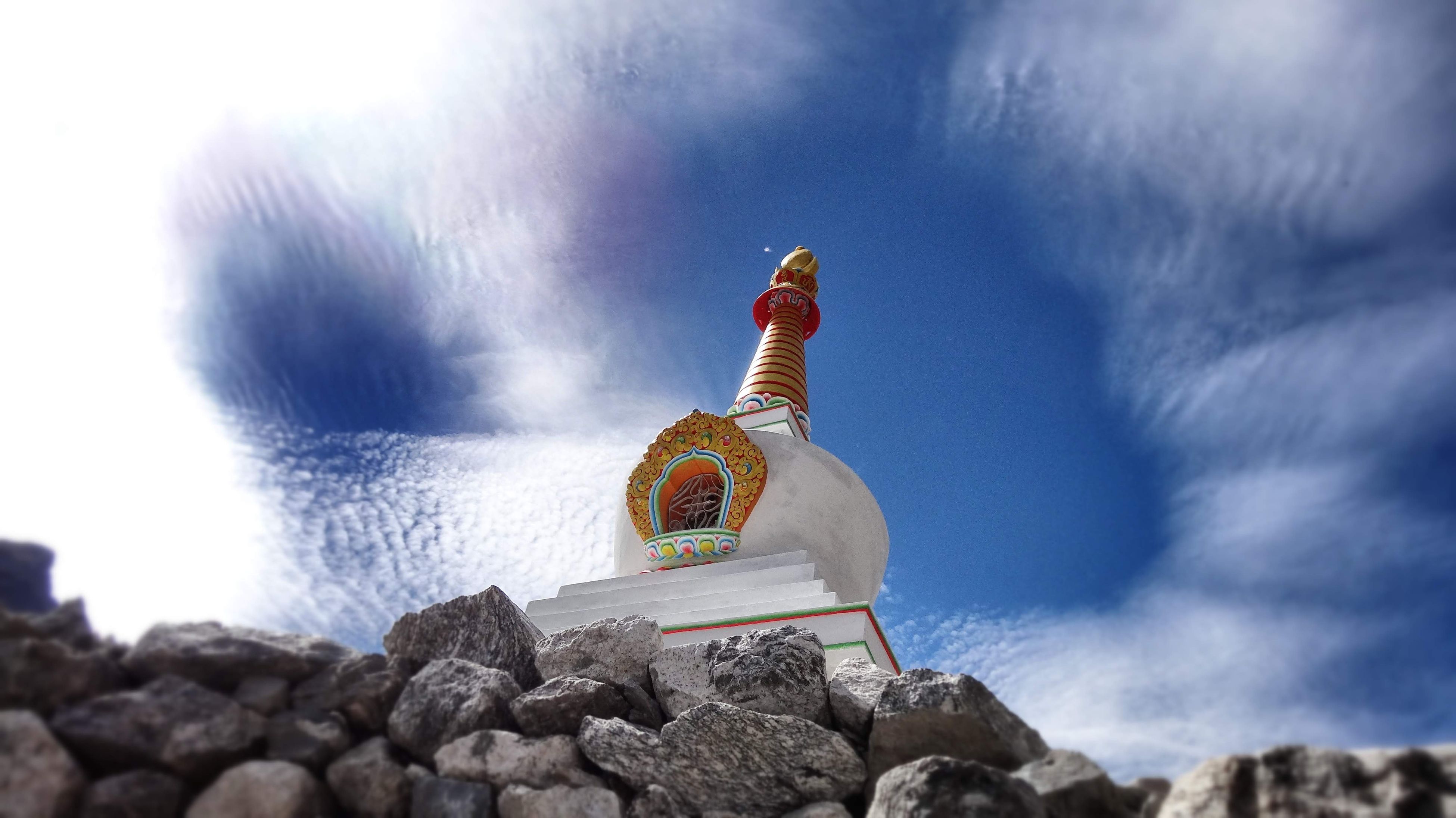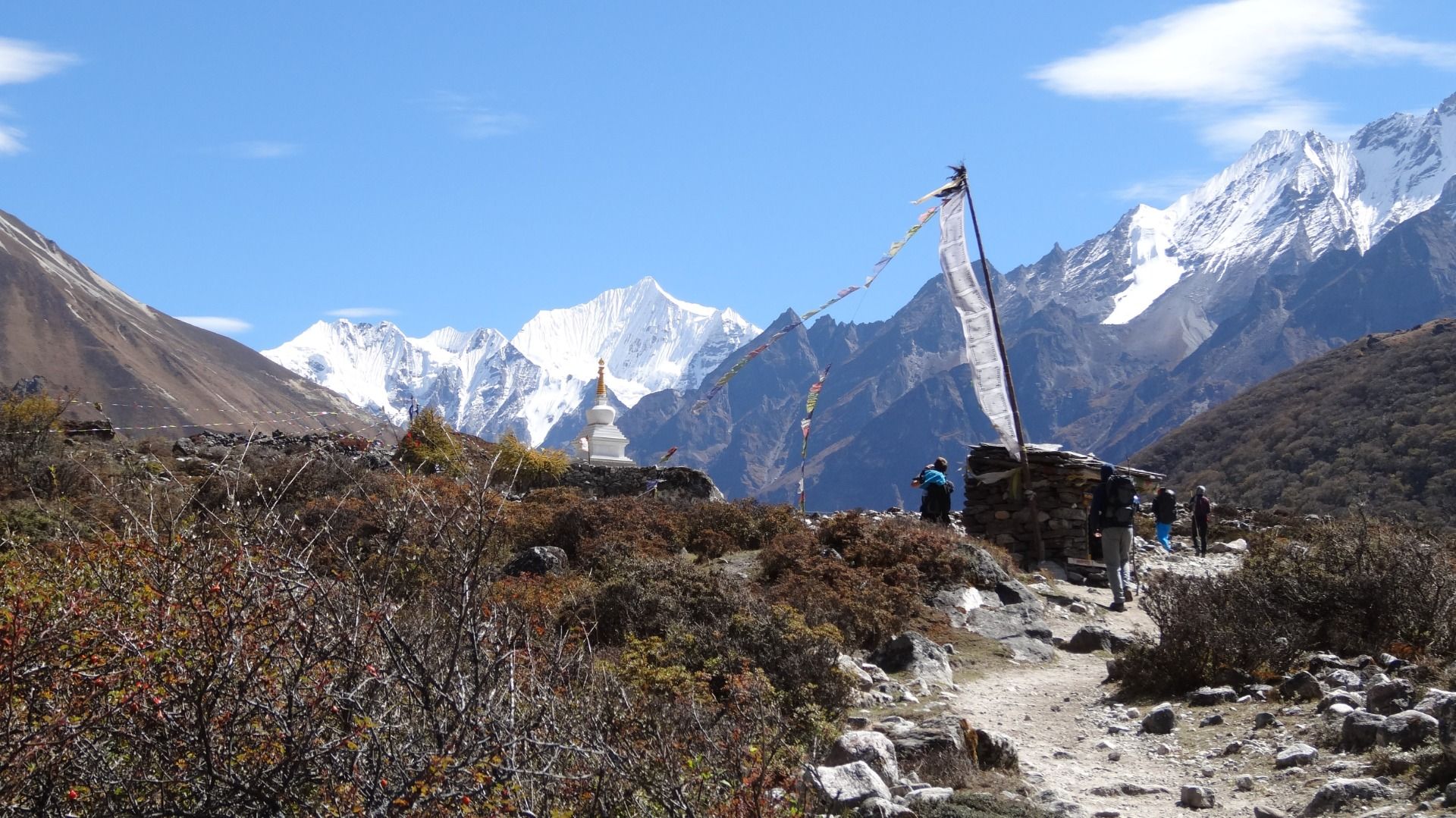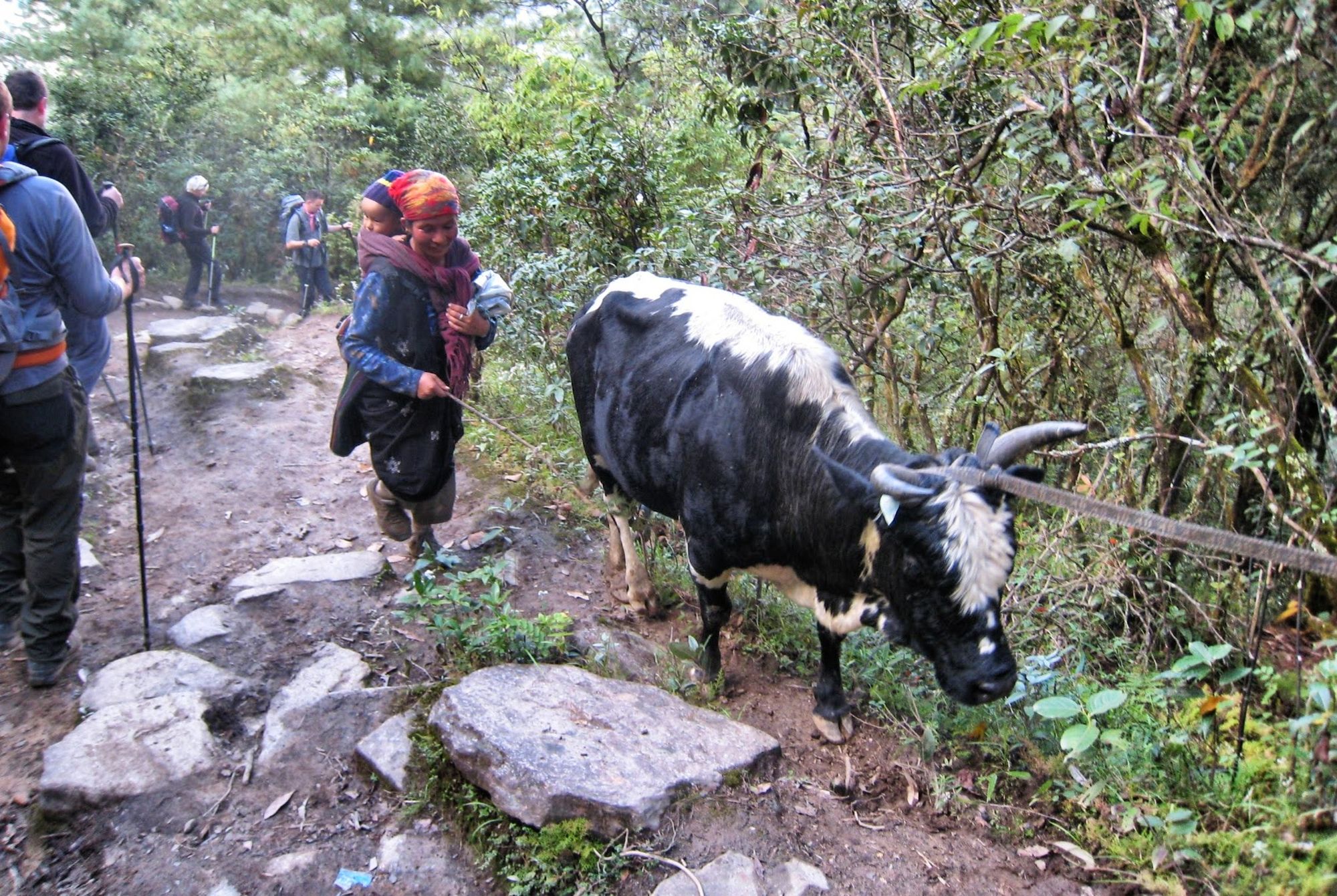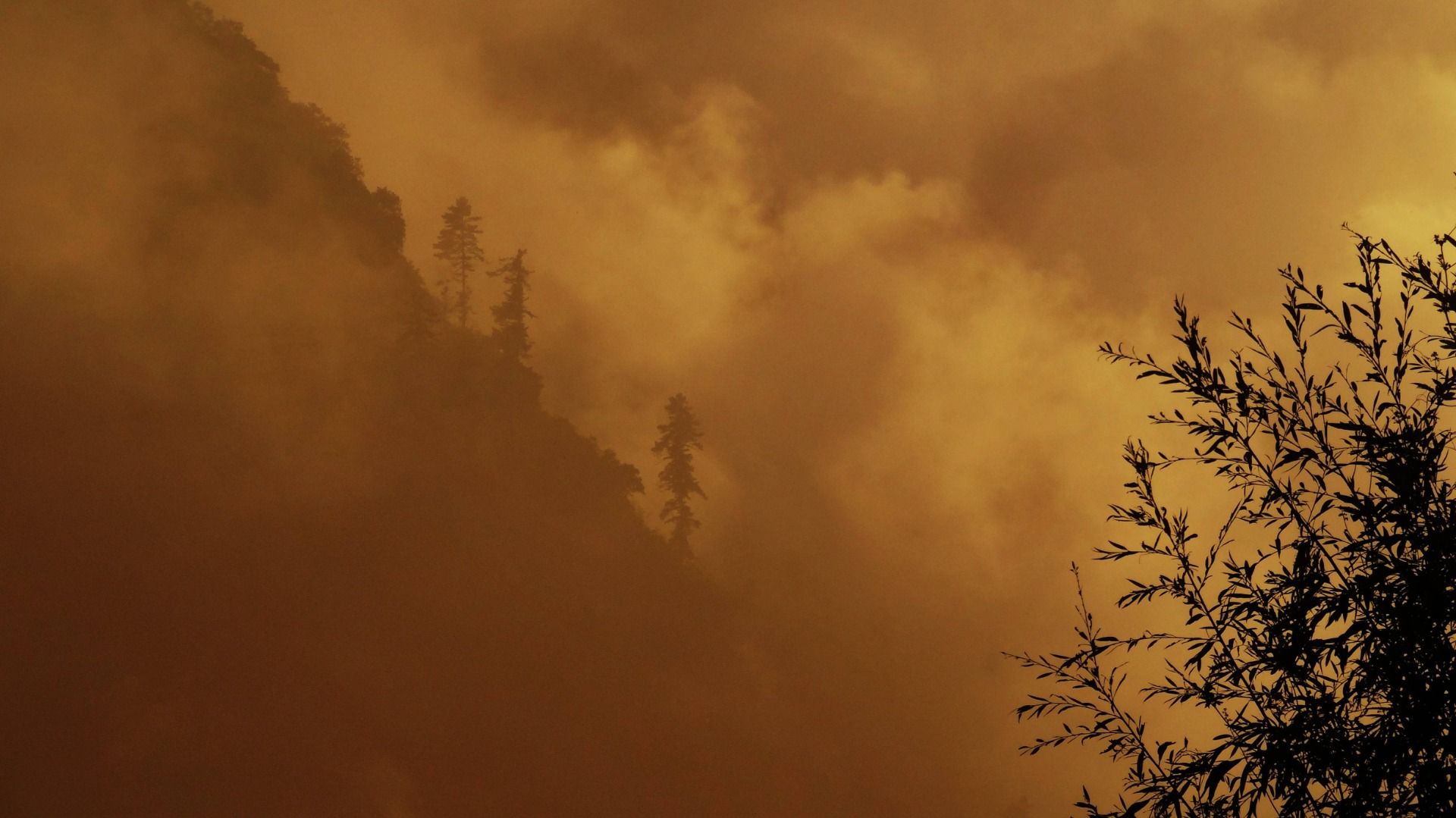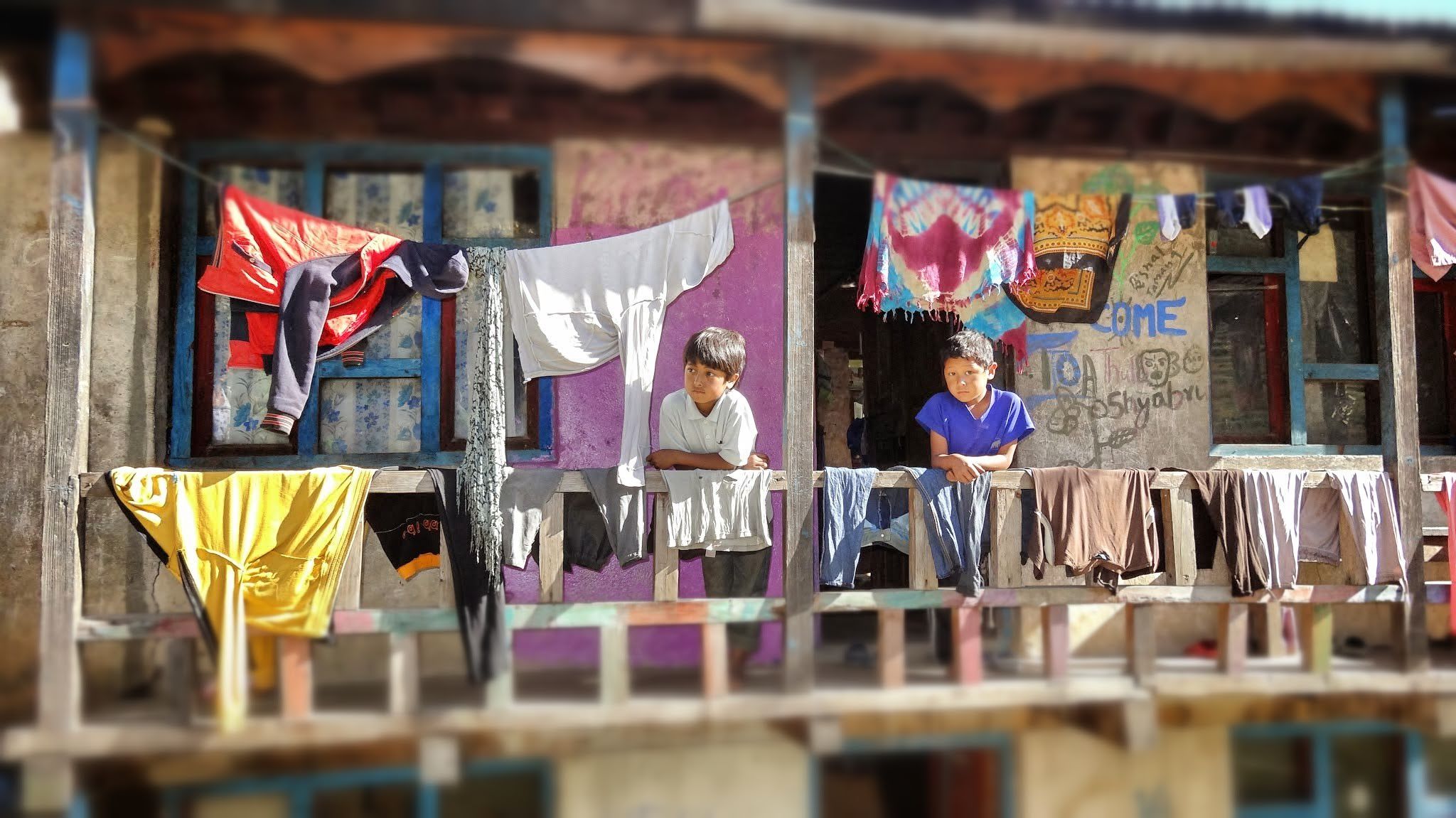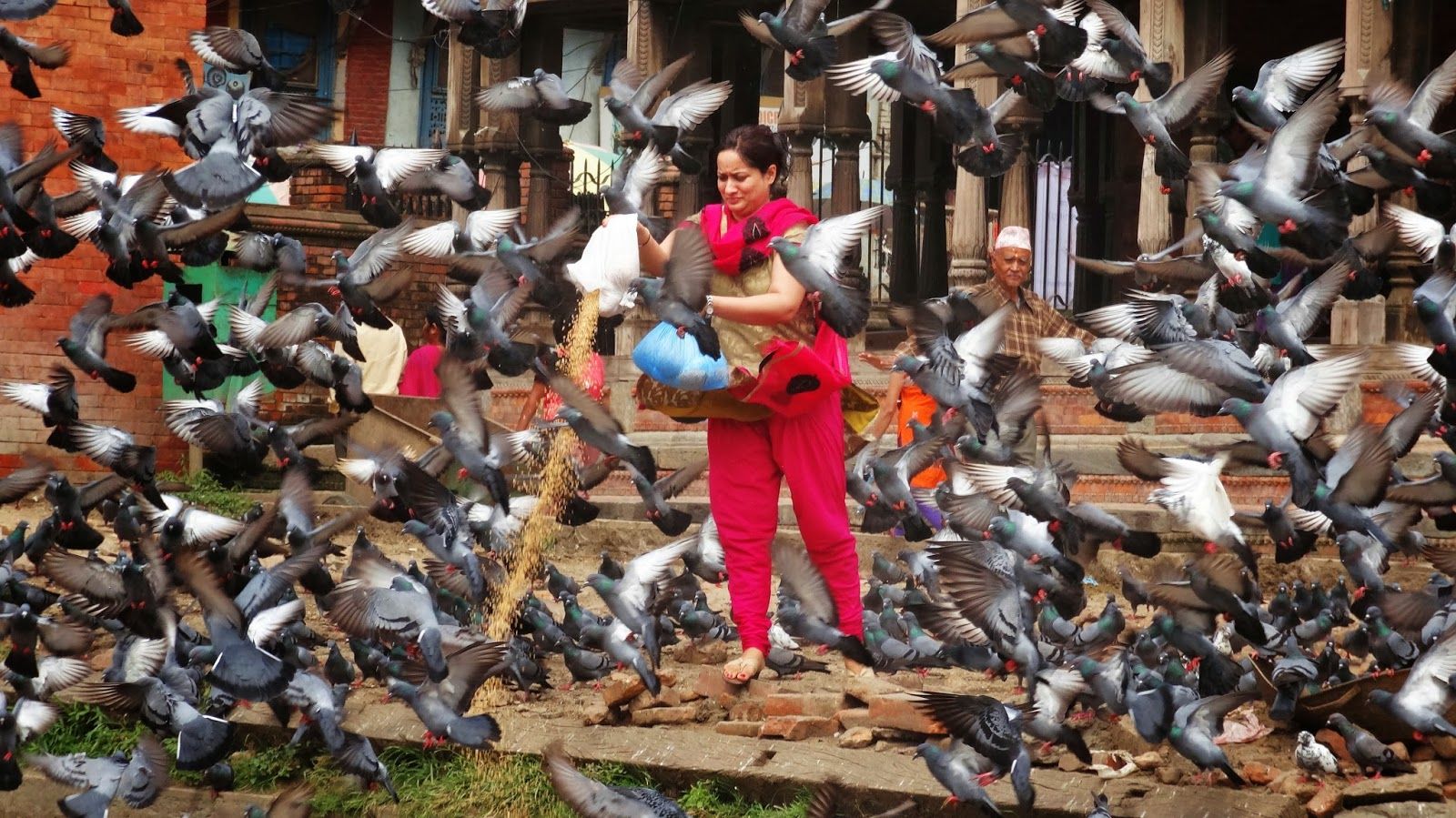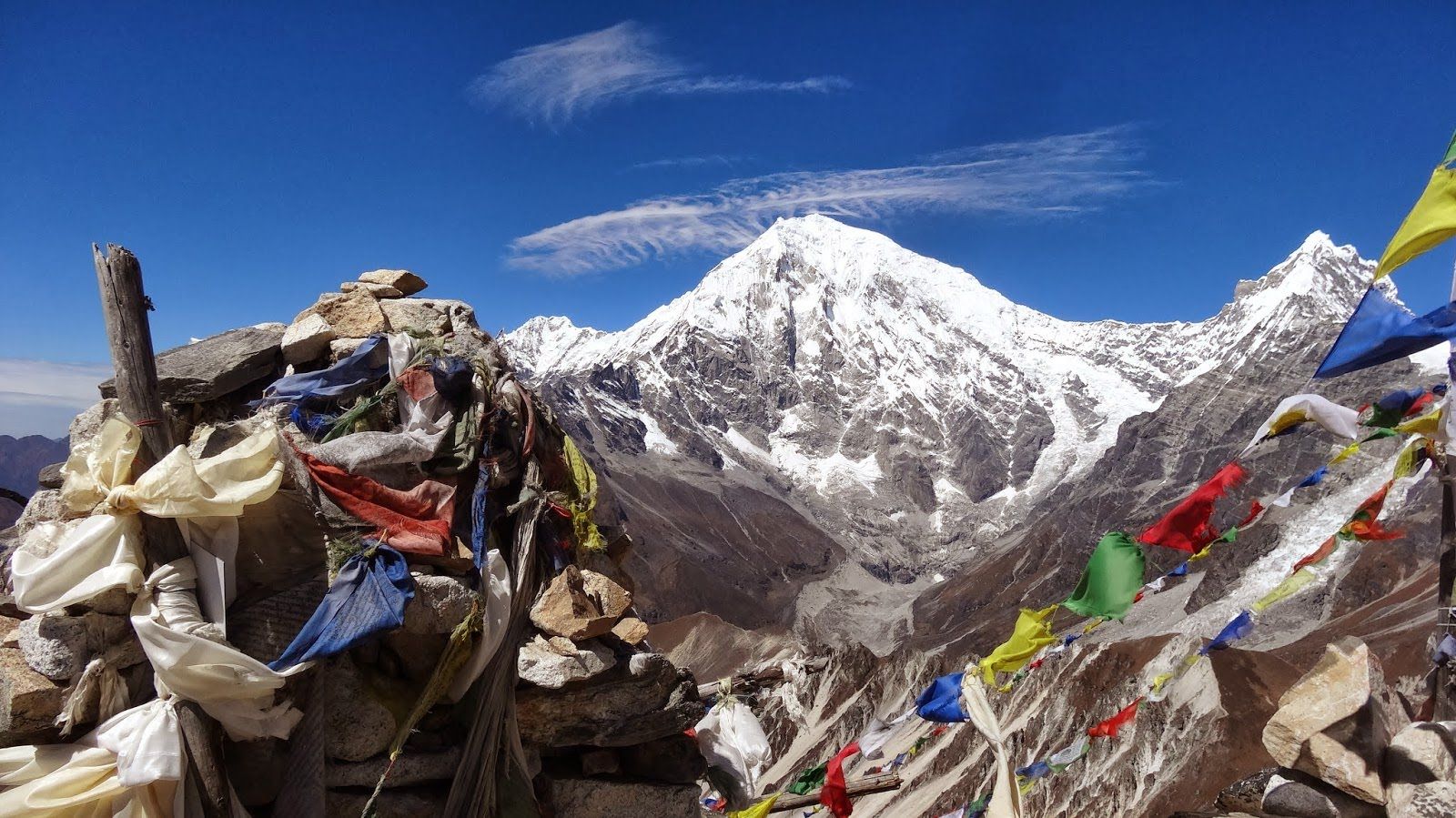No city has more traffic, but at least nowhere is it more chaotic. Twice a day, the historic old town of Kathmandu resembles a moped parking lot, with trucks and cars pushing through, making room out of respect for their size. An SUV costs three to four times more here than in the West, but thanks to rampant corruption in every construction project, there are enough people who can afford the latest models.

We are in Nepal, one of the most fascinating countries in the world. In the north lies the Himalayas, the highest mountains on earth. The flat land was higher than the highest mountains at home. And everything is so strange and different that you feel like you're on a distant planet...
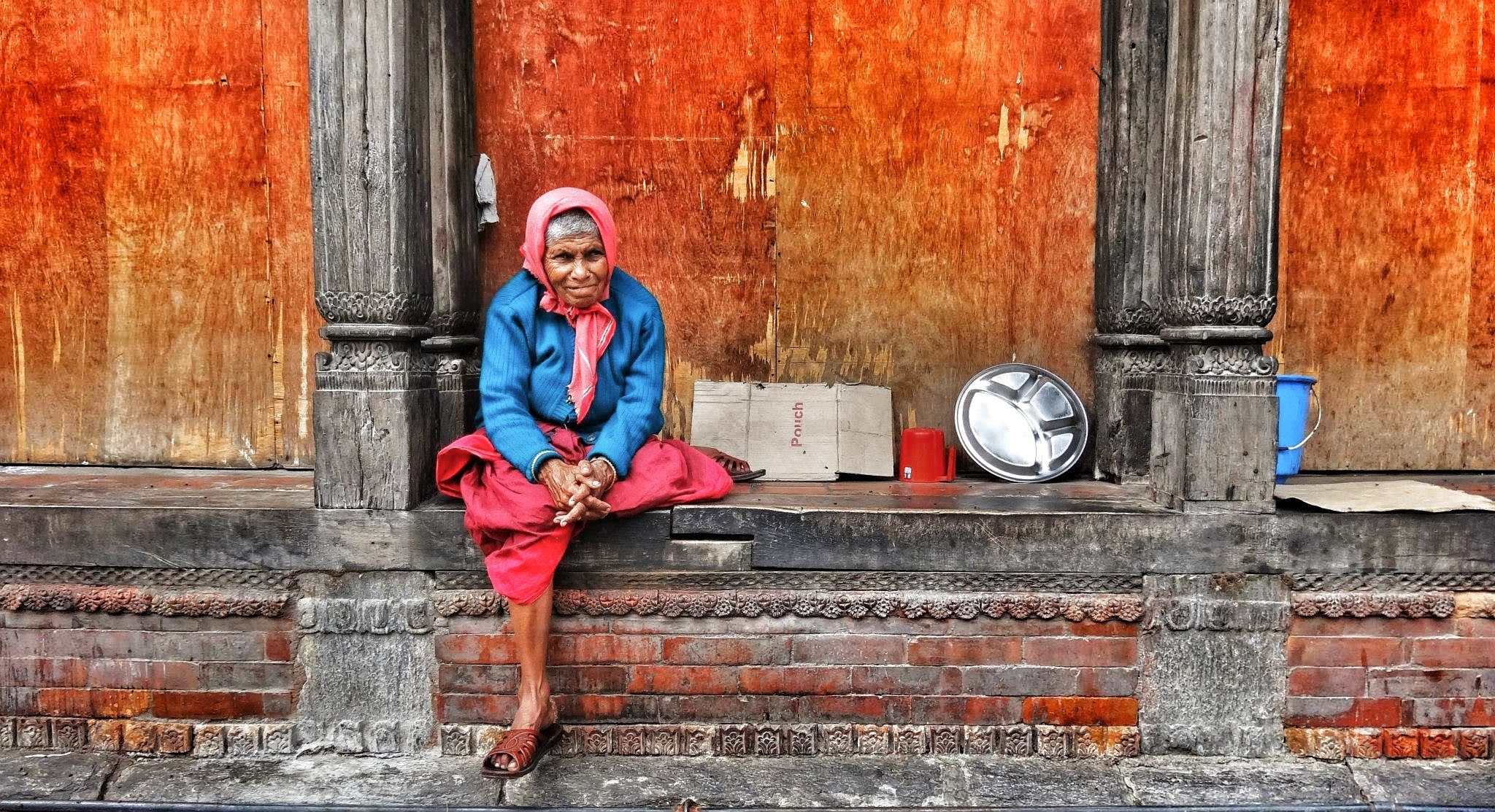
It's just a bus, a very unspectacular bus, that brings trekkers to the start who are not drawn to the two well-known Nepalese hiking areas on Everest and around Annapurna, but to the third, still relatively new area on the 7,246 meter high Langtang Lirung. However: The few kilometers up to the start of the tour in Sundarijal are hardly less adventurous than the breathtaking approach to the Everest area. Narrow streets, steep drops, wild traffic.
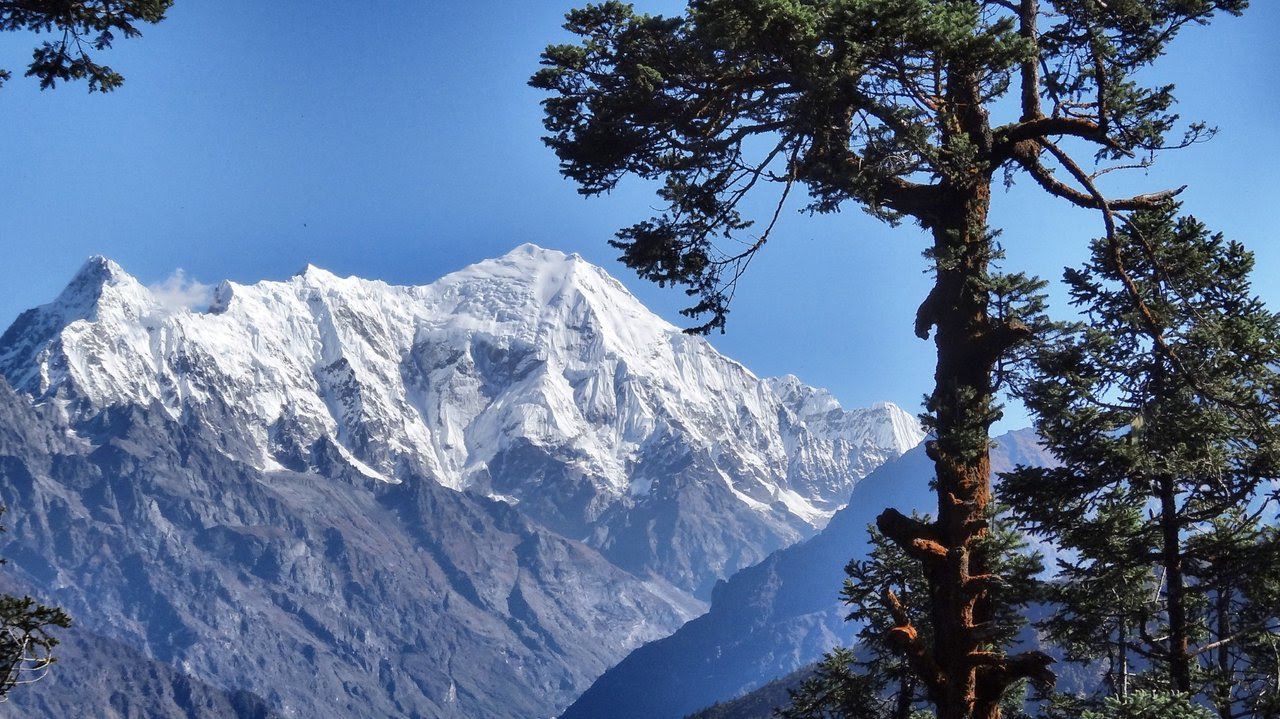
The world becomes all the quieter on the first mountain, a dwarf that appears monstrous to the flatlanders and that only the local guides take as if it doesn't exist. Hari and Hari are the names of the two Sherpas in the trekking group, Udaya Sharma is the experienced, German-speaking tour guide.
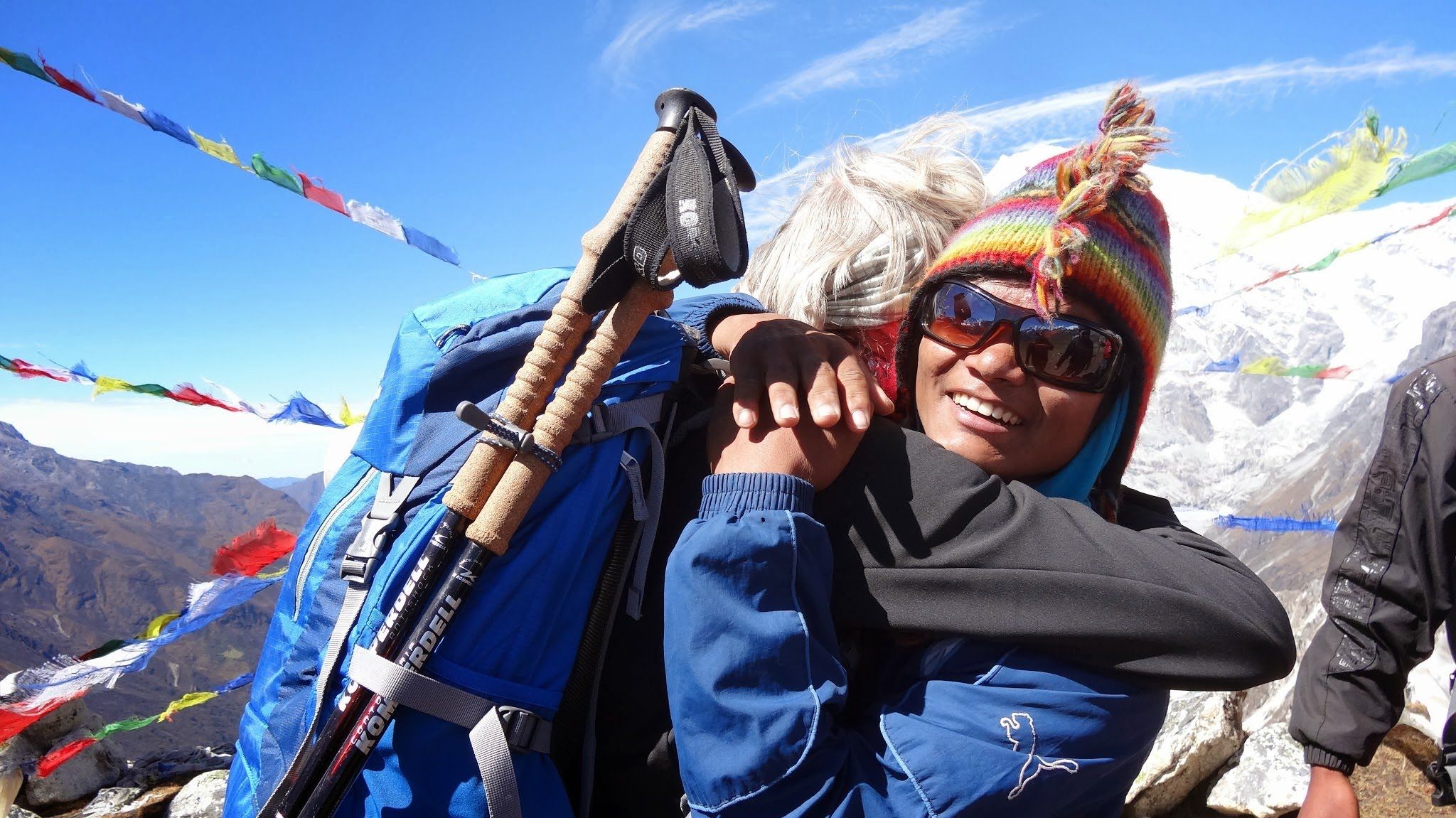
Hari one, the always smiling man in the blue down vest, will always be at the front for the next two weeks, a never-sweating walking machine who always reminds us “Pistare, Pistare”. “Slowly, slowly” is translated by Hari Bahadur Tamang, who studies accounting in Kathmandu and walks as the second Sherpa at the end of the queue of hikers so that no one gets left behind.
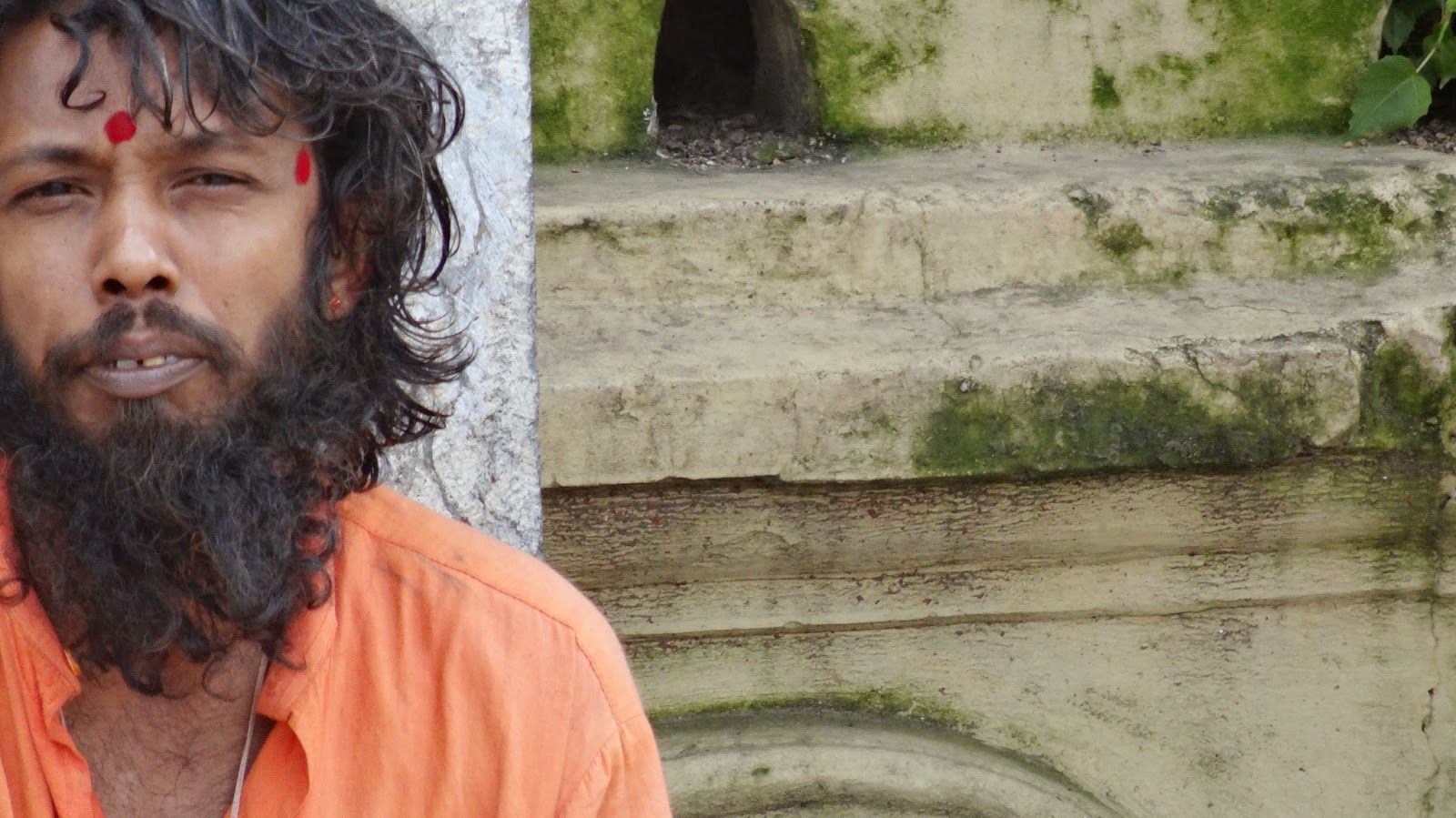
This is still important in the first hours of the 160-kilometer tour (stage description), which is divided into twelve days, through the Helambu Valley to the Langtang area with the almost 5,000-meter peak of the Tsergo-Ri. But anyone who flies to Nepal to go trekking, like the extremely fit friends Ewa and Rosi in their mid-fifties or the 74-year-old world traveler Herbert, knows that this is not a race, but an endurance run.
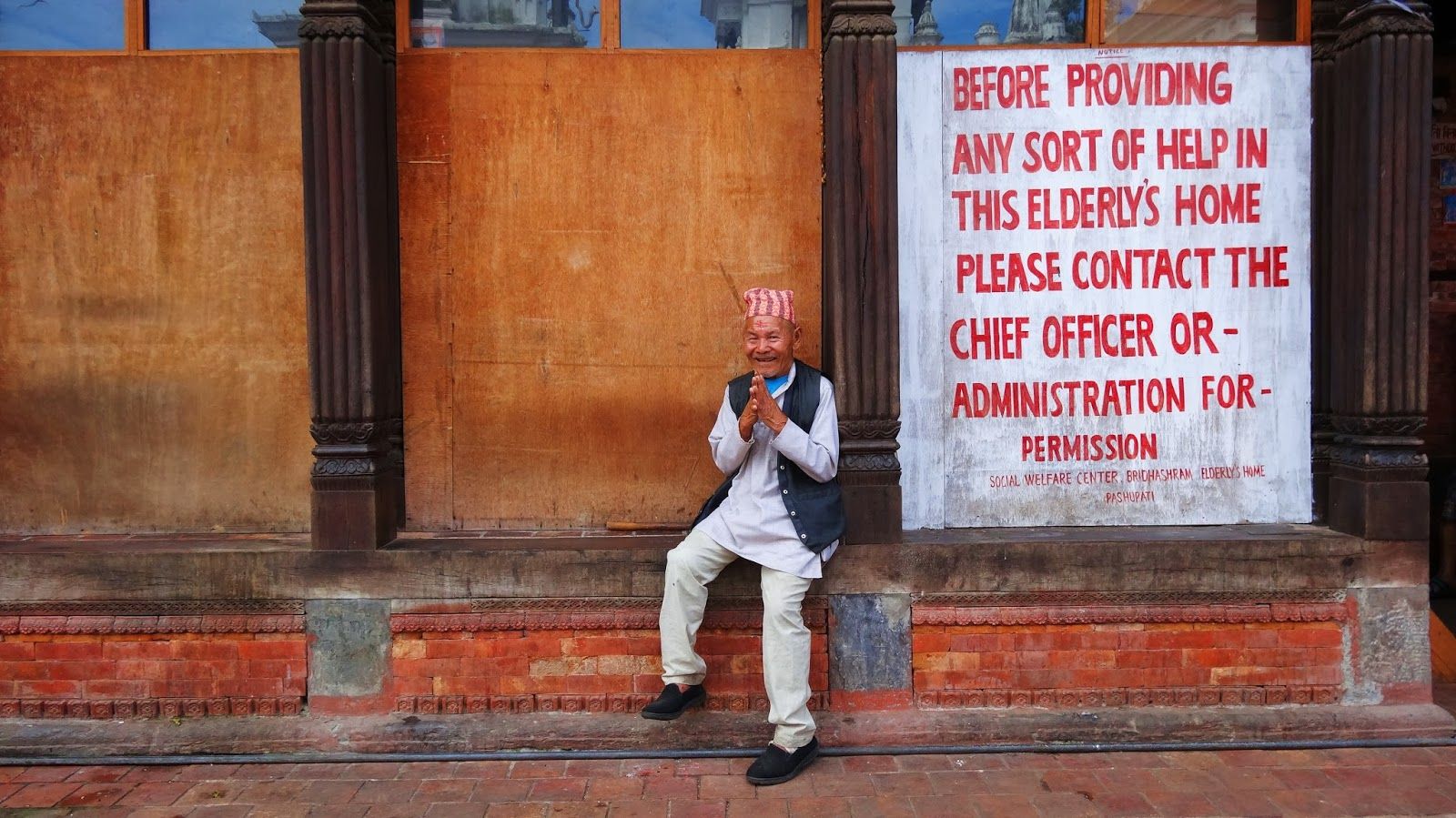
“Walk steadily,” recommends Udaya Sharma, who also ensures constant drinking and tea breaks. The group is still scrambling around at 2,000 meters, but with a planned climb of up to 4,600 meters just to cross the pass, altitude sickness is a real danger that can only be contained by meticulously following rules of conduct. Slow acclimatization helps. Slow walking. Drink a lot. And keep climbing up in order to dive back to lower altitudes just before spending the night.
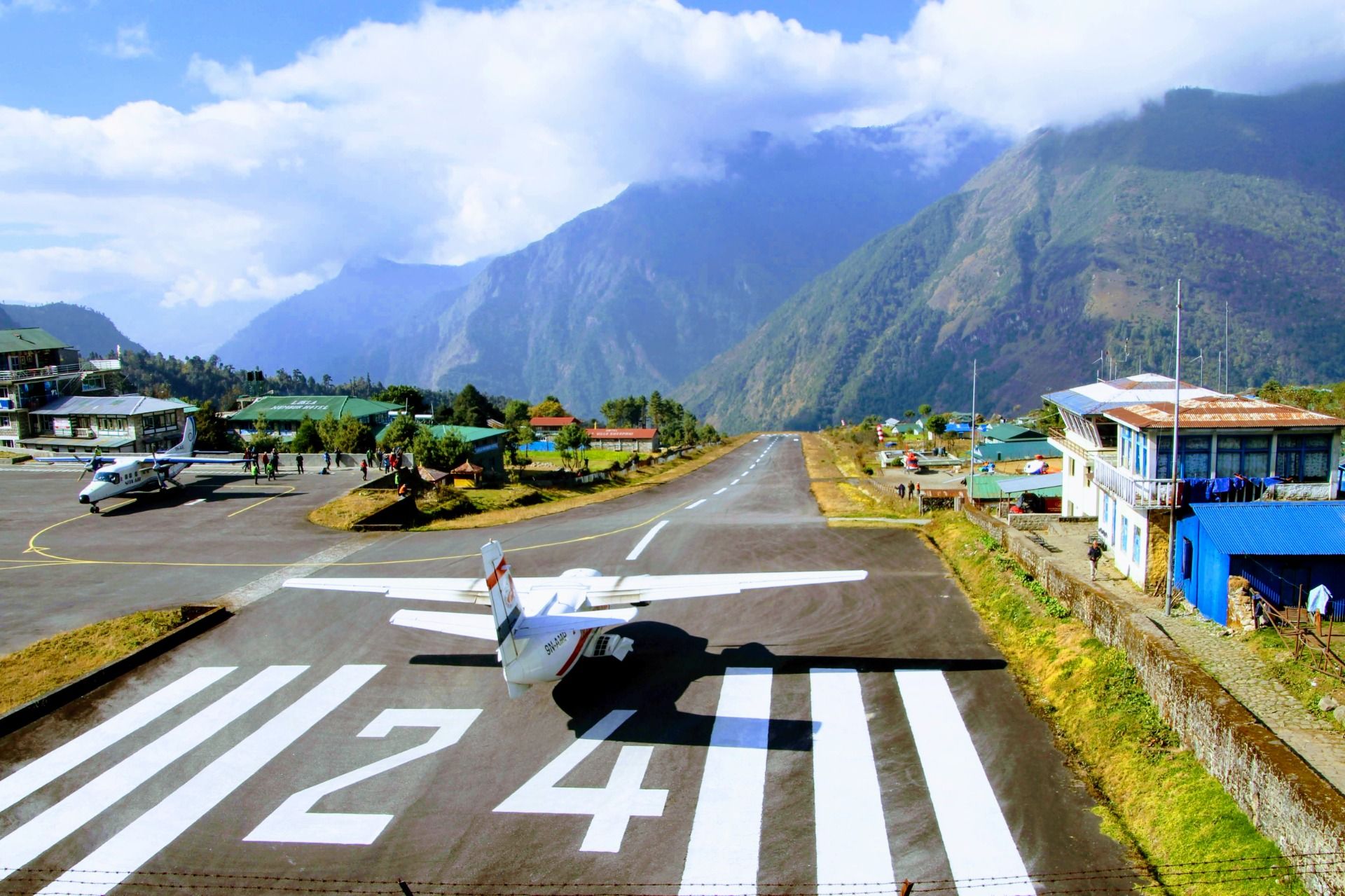
A plague is the rain with which the monsoon season says goodbye to Nepal at the beginning of October. The dense, redwood forests of Shivapuri National Park are subtropically warm. Red pandas live here, but also leeches that specialize in treacherous attacks.
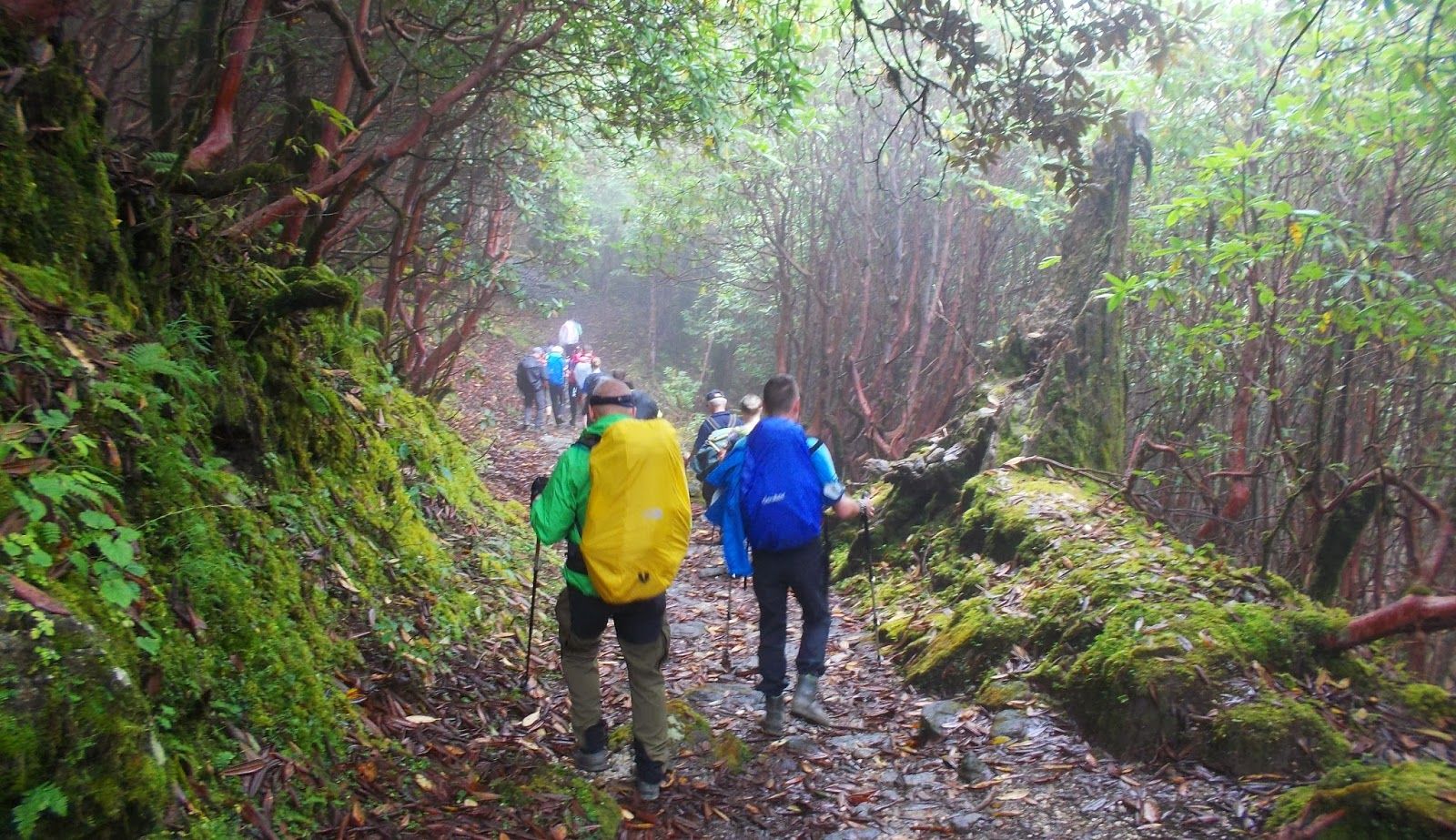
The wetter, the busier the animals are. Trekkers are faced with the choice of putting on their rain pants and getting soaked with sweat from the inside. Or to leave them in your main luggage, which eight amazing porters rush to your destination every day. Then you get rained on.
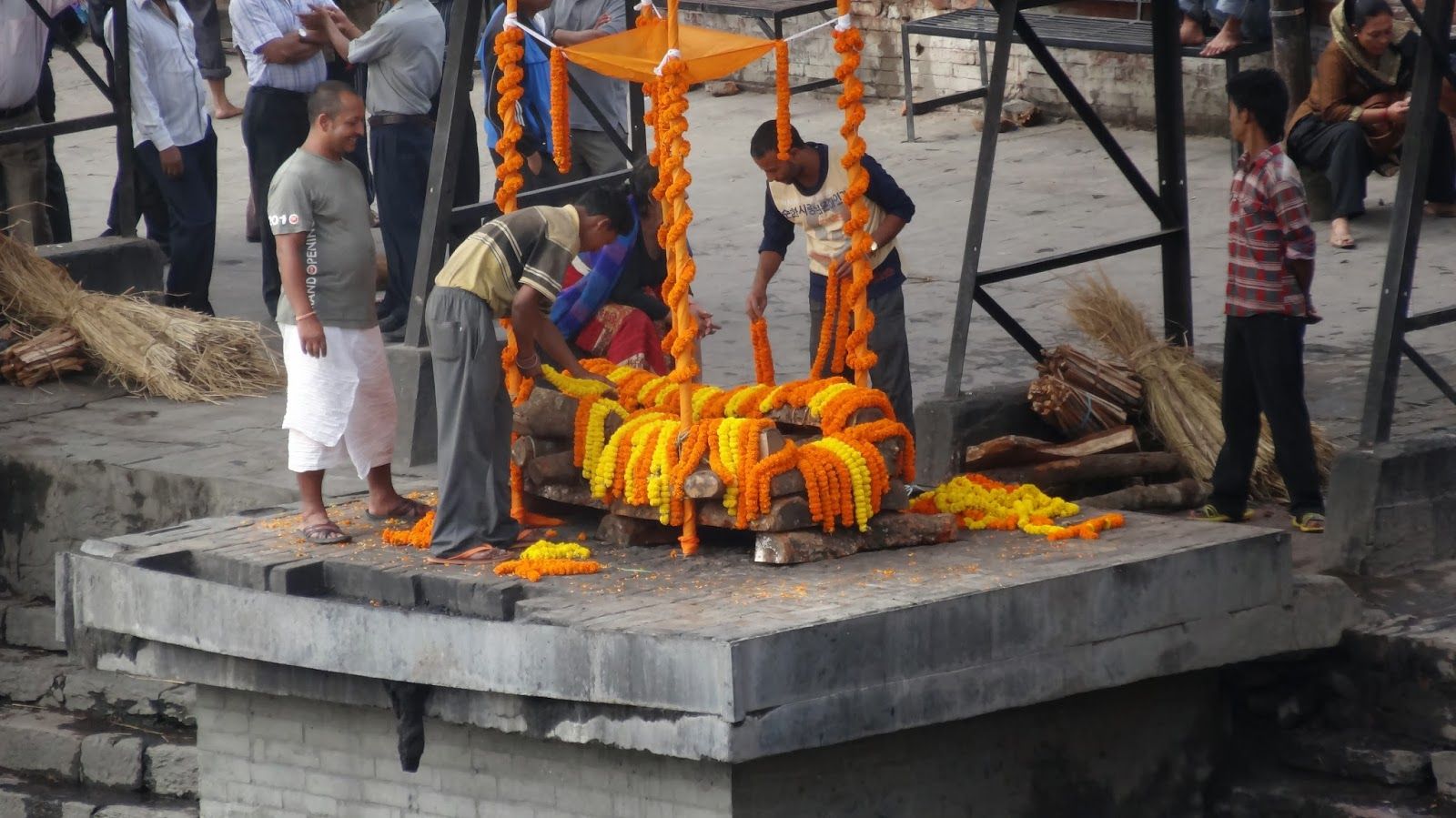
But every trekking tour through Nepal first of all means saying goodbye to everything that seems important in western civilization. The last shower is always reached at some height.

The lodge kitchens have usually run out of toast for a long time. But in the Langtang, between the careful trudge up and down the slopes, things go even faster: On day three, Wolfram, who has forgotten his rain gear at home, suddenly realizes that "you actually only need what you have anyway."
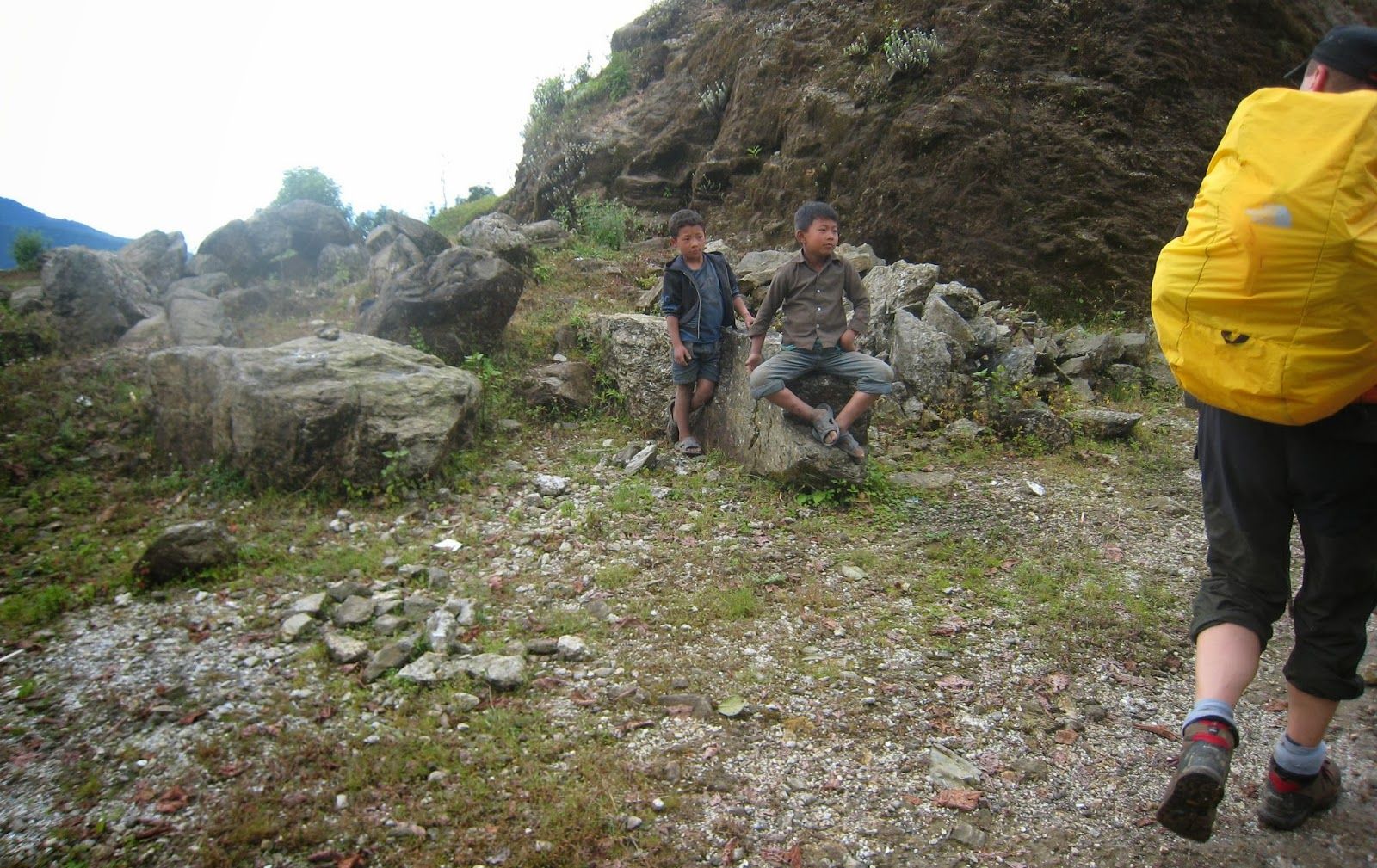
And thats how it is. You go on and on, wet or dry. The mountains are getting higher, the air remains humid, the atmosphere is fantastic. On the third evening, the entire soggy club sits around the sooty stove in the main room of a lodge in Thare Pati.
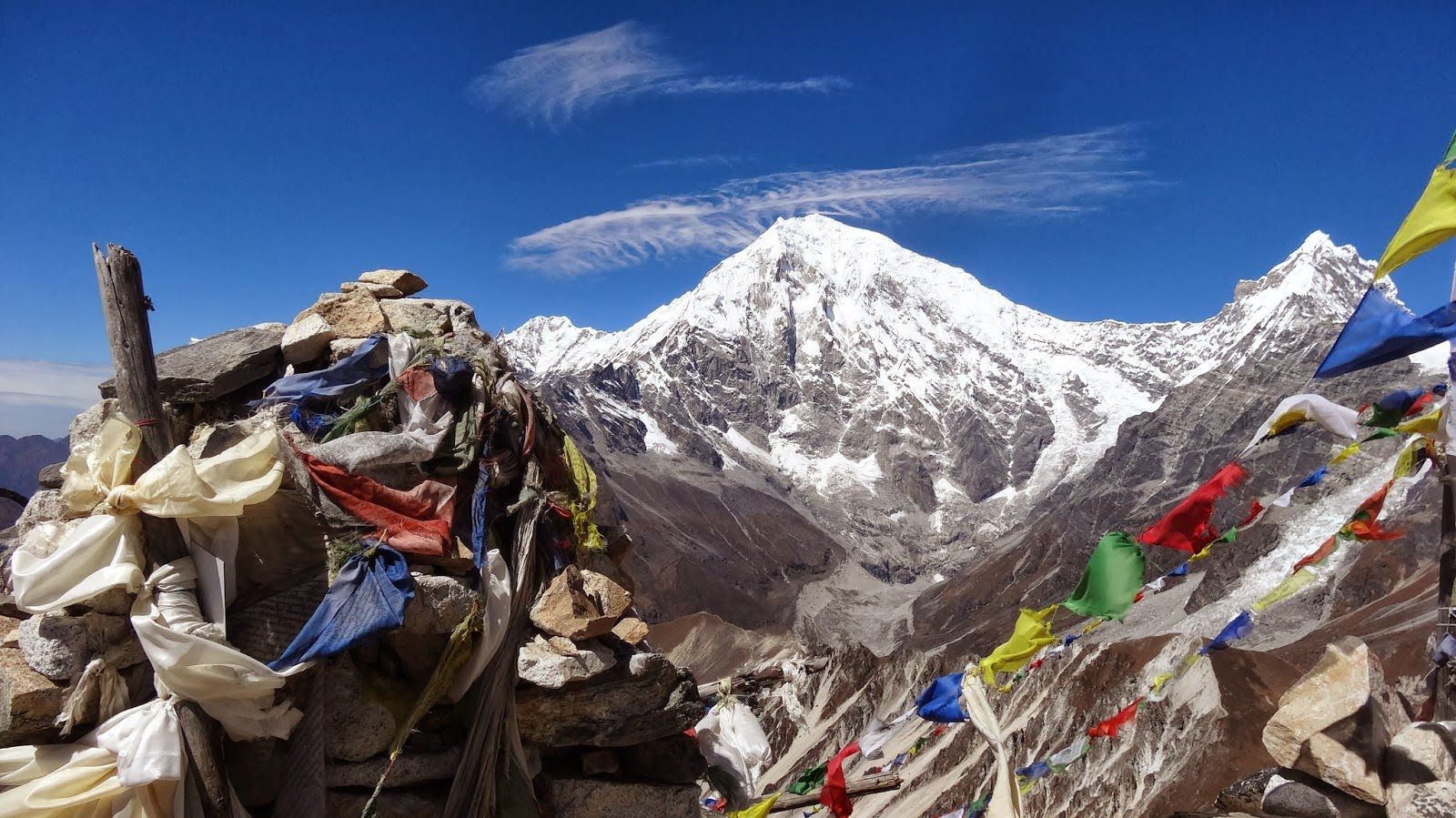
There is a T-shirt, a jacket and a pair of pants hanging on every nail and every line. It must smell like a burning stable in here. But everyone drinks ginger tea and Everest beer, chews dal bhaat made from lentils, rice and curry and laughs at the jokes that Udaya Sharma cracks.
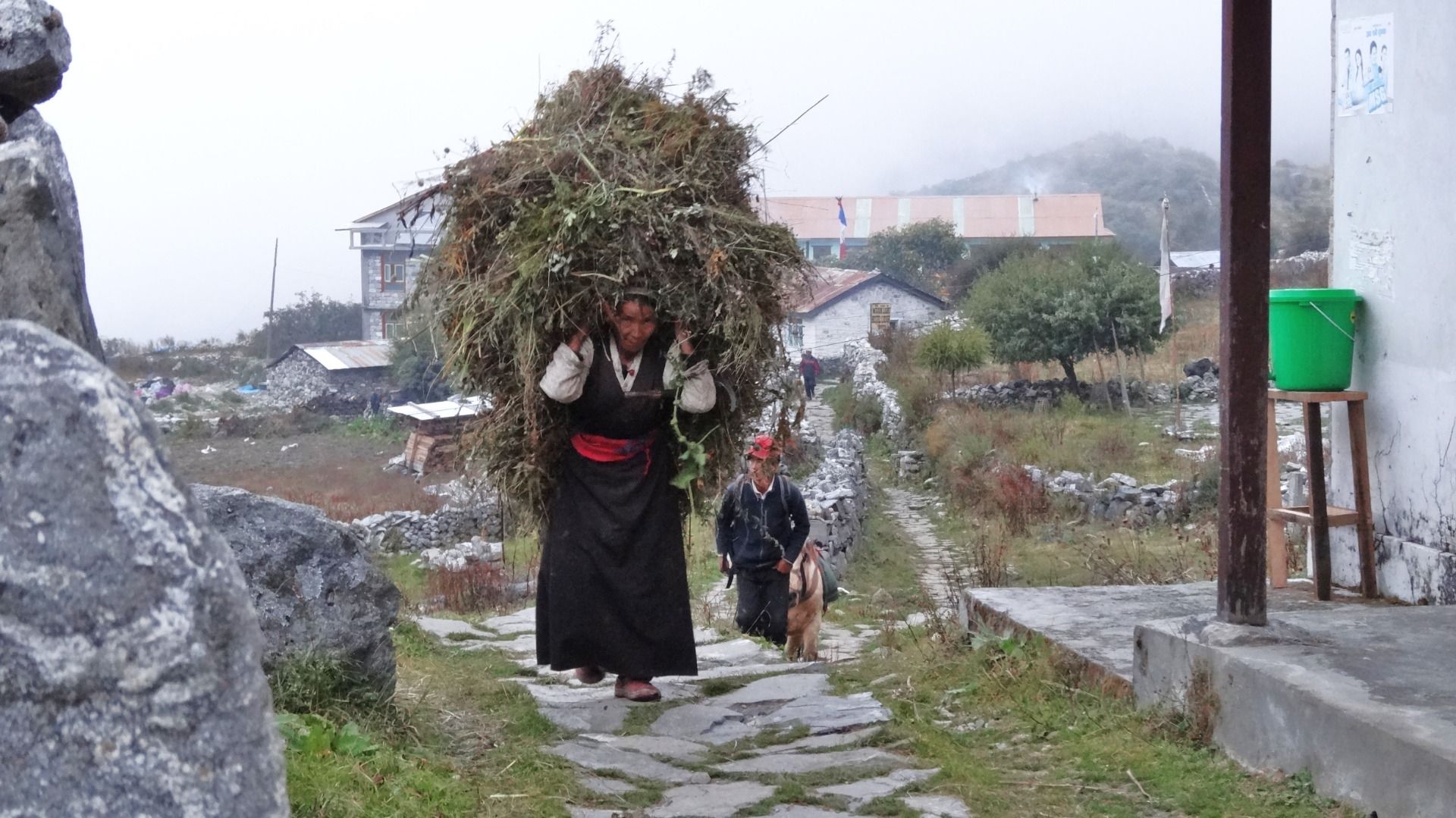
Everything is terrifying, poignant and unforgettable. No matter how far away this land of high mountains is and no matter how high the prices for a trip have risen - one day we will want to see and experience it again.
Thank you for reading and if you like my work please follow me on Hive, Travelfeed or Steem or visit my homepage koenau.de
